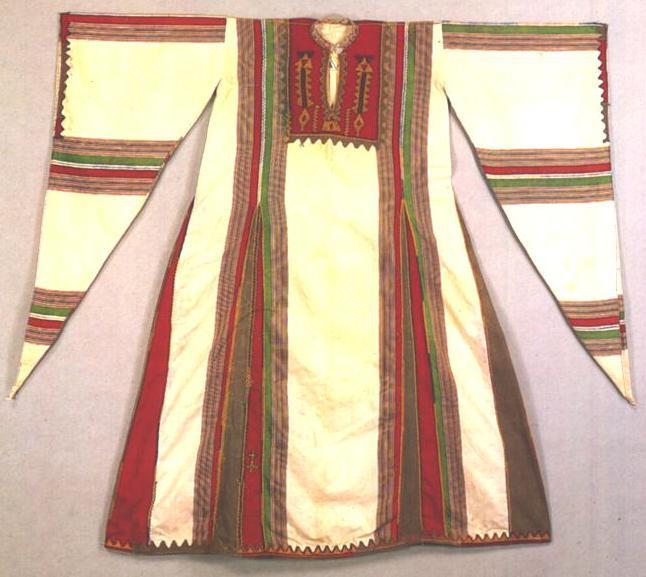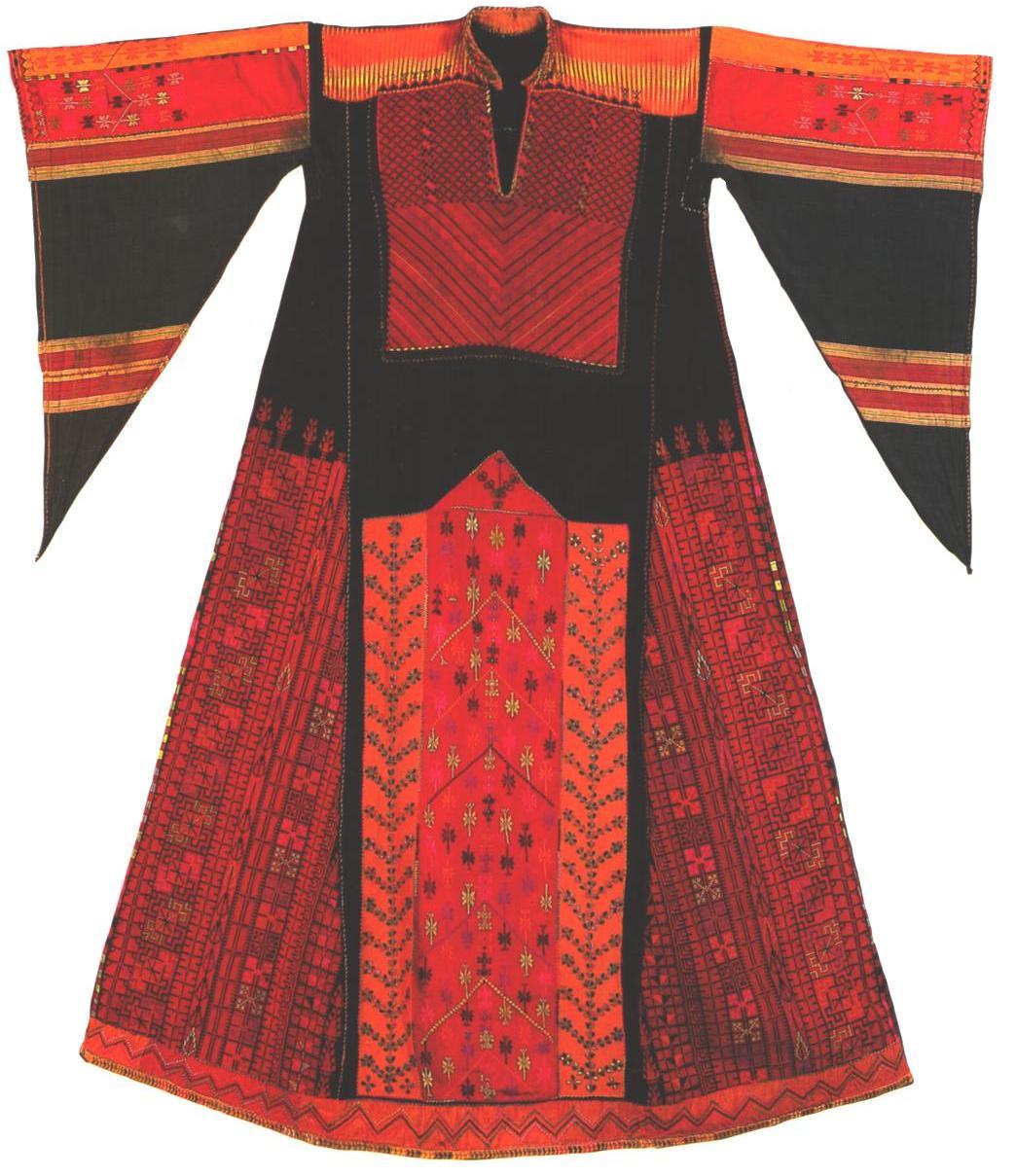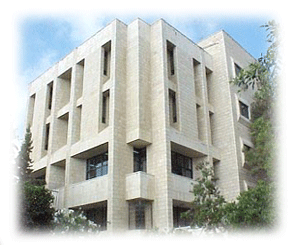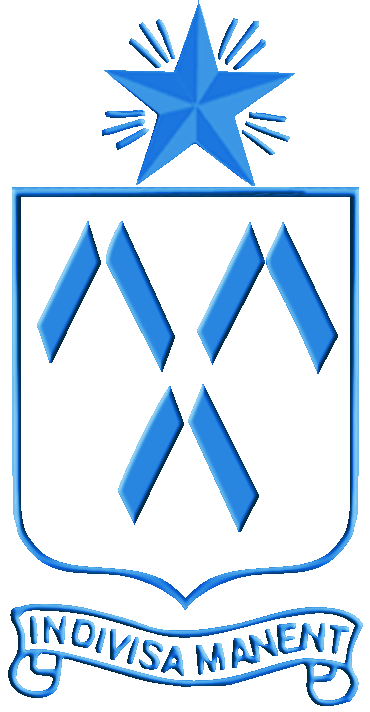|
Turathuna Center
Embroidery
A girl normally began embroidery around the age of six
or seven, and was taught cross-stitch and the motifs of
her village by older girls or women. When she had learnt
to sew neatly, she began embroidering the panels of her
trousseau garments, and took her mother’s measurements to gauge
her size. Dresses were sent to professional dressmakers
for decorative patchwork and this was paid for by the
groom as part of the dowry called ‘kisweh’.
The only area of Palestine where dresses are not richly
decorated with silk embroidery is around the area of Tulkarm
and Nablus. Women from the area attribute this
remarkable cultural exception to their disdain for
embroidery as a waste of time and money and to their
heavy involvement in agriculture; women say
‘embroidery’ signifies a lack of work. They never
admired embroidery. Agriculture was their only source of
income. Festive dresses in southern Palestine are
richly embroidered using cross-stitch, silk thread and
couching with silk.
Learning to embroider was like a school for them, to
educate their daughters for the society of their time.
Embroidery like all languages and artistic endeavours,
also united those who shared it as a
community, both as women in general, and as women of a specific
village. Girls who married into another village were
pressured to adopt their style of costume and
embroidery; to fit in properly they had to conform to
their standards and speak their language. Women have a
strong sense of village identity and pride which is
expressed in specific designs and motifs.
Text and photos: "Palestinian Costume" by Shelagh
Weir, c1989. and "Palestine in picture" by C.E.Raven, c
1929. |

Dress from north of Palestine
ثوب من شمال فلسطين

Men and women working in the field
رجال ونساء يعملون في الحقل

Dress from south of Palestine
ثوب من جنوب فلسطين
|
|
مركز تراثنا
التطريز
كانت الفتاة تبدأ التطريز عادة عندما تصل سن
السادسة أو السابعة. حيث ان الفتيات الأكبر سنا
والنساء يعملن على تعليمهن قطبة الصليب والتصاميم
الخاصة بقريتهن. تبدأ الفتاة بتطريز حواشي الثياب
بعد أن تتقن الخياطة. ويتم إرسال الثياب إلى
خياطين مهرة لتزيين الثوب بقطع قماش تخاط فوقه.
كان العريس يدفع ثمن هذه الخياطة كجزء من المهر
"كسوة".
ان المنطقة الوحيدة في فلسطين التي لا تهتم نساؤها
كثيرا في التزيين والتطريز هي منطقة طولكرم ونابلس
حيث نساء هذه المنطقة من فلسطين لا يفضلن التطريز
لأنه بنظرهن مضيعة للوقت والمال اضافة الى
انشغالهن بالزراعة، ويعتبرن ان التوجه نحو التطريز
هو دلالة على عدم وجود عمل آخر فالزراعة هي مصدرهن
للدخل. أما ثياب المناسبات في جنوب فلسطين فقد
كانت غنية بتطريز قطبة الصليب والقماش المخيط
بالحرير فوق الثوب.
كان تعلم التطريز بمثابة مدرسة للنساء لتربية
بناتهن المجتمعية وبدء انخراطهن في المجتمع. كان
التطريز ككل اللغات والأعمال الفنية يوحد هؤلاء
الذين يمارسونه بالشعور بالانتماء للجماعة.
كانت الفتيات اللواتي يتزوجن وينتقلن إلى قرية
أخرى يضغط عليهن لتبني أسلوب لباس وتطريز تلك
القرية، لكي يتناغمن مع معايير تلك القرية ويتكلمن
لغتها.
|
|








